#Skardu in winters
Text
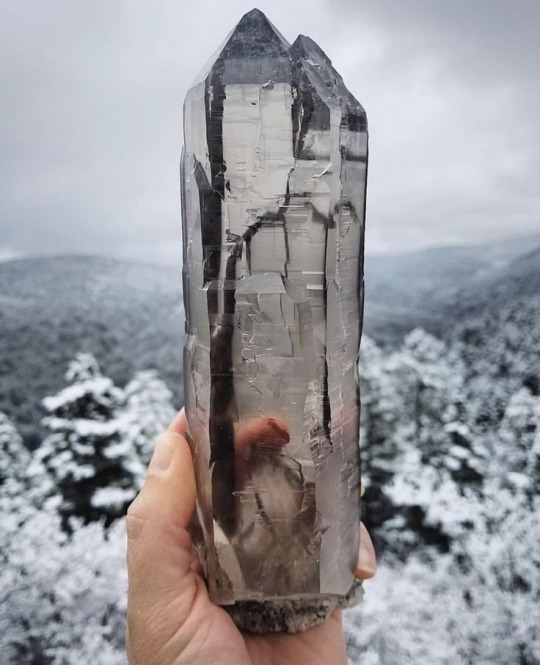
**Not my photo** Source: The Mineral Collective
#crystal#crystals#winter#snow#high road#taos#snowstorm#smoky quartz#smokey quartz#skardu#pakistan#crystalcore#witchcore#winter fairy#frost fairy#frost elf
17 notes
·
View notes
Text
youtube
#travel vlog#Ugly And Traveling#travel around the world#Manthokha Waterfall#Manthokha Waterfall Skardu#Manthokha Waterfall Skardu Pakistan#Kharmang Valley Skardu#Gilgit Baltistan#skardu pakistan#gilgit#skardu#skardu valley#manthokha waterfall pakistan#manthoka waterfall#manthokha waterfall#manthoka#manthoka waterfall skardu#manthoka waterfall a place to remember#manthoka waterfall in winter#manthoka waterfall skardu roads skardu series#skardu valley tune#khyber#ugly and traveling#uglyandtraveling#travel channel#travel backpack#travel blogger#ugly & traveling#travel#traveling vlog
0 notes
Text
Exploring Where is Skardu Located in Pakistan

Introduction
Nestled amidst the towering peaks of the Karakoram Range, Skardu stands as a beacon of natural wonder in the northern region of Pakistan. In this comprehensive guide, we delve into the geographical intricacies of where is Skardu located in Pakistan, uncovering its location and highlighting its unique features that make it a must-visit for adventurers and explorers.

Image by Canva
Discovering Skardu's Geographic Location
Situated in the Gilgit-Baltistan region of Pakistan, Skardu occupies a strategic position amidst some of the world's highest mountain ranges. Bordered by China to the north and India to the east, Skardu serves as a gateway to the majestic landscapes of the Karakoram and Himalayan ranges.
The Topographical Tapestry of Skardu
Skardu's landscape is characterized by rugged mountain peaks, verdant valleys, and shimmering lakes. At the heart of the region lies the mighty Indus River, whose meandering course adds to the scenic splendor of the surroundings. The town itself is cradled by the Karakoram Range, with iconic peaks such as K2 dominating the skyline.
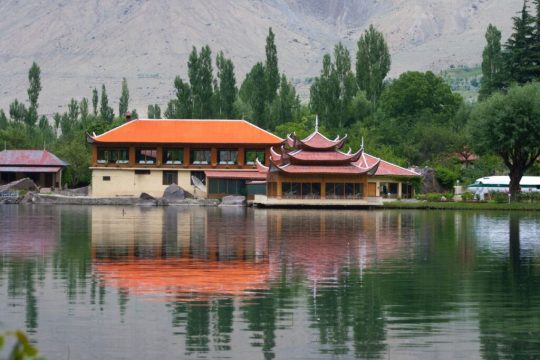
Image by Canva
Climate and Weather Patterns
Skardu experiences a diverse climate, with summers offering mild temperatures ideal for outdoor activities, while winters bring snowfall and colder temperatures. The region's high altitude contributes to its unique weather patterns, making it a haven for adventurers seeking both summer escapades and winter wonderlands.
Cultural Heritage and Diversity
Skardu is home to a rich tapestry of cultures, with influences from Balti, Tibetan, and Kashmiri traditions evident in its customs, cuisine, and architecture. Visitors to Skardu have the opportunity to immerse themselves in the vibrant local culture, from exploring ancient monasteries to interacting with hospitable communities.
Tourism and Adventure Opportunities
As a gateway to the world-renowned trekking routes of the Karakoram Range, Skardu attracts adventurers from across the globe. Trekking expeditions to iconic peaks such as Concordia and K2 Base Camp offer unparalleled opportunities to witness the awe-inspiring beauty of the region. Additionally, the tranquil waters of lakes like Satpara and Sheosar provide the perfect backdrop for leisurely boat rides and picnics amidst nature.

Image by Canva
Accessibility and Transportation
Despite its remote location, Skardu is accessible via air and road networks. Skardu Airport serves as the primary air hub, with flights connecting the town to major cities like Islamabad and Lahore. For those traveling by road, scenic routes wind through breathtaking landscapes, offering glimpses of snow-capped peaks and cascading waterfalls along the way.
Preservation and Conservation Efforts
Recognizing the importance of preserving Skardu's natural beauty, local authorities and conservation organizations have implemented measures to promote sustainable tourism practices. Efforts focus on minimizing the ecological footprint of tourism activities, preserving fragile ecosystems, and supporting local communities to ensure the long-term sustainability of the region's natural resources.
https://youtu.be/cz80kK7-WyM?si=00bY94GJ6Y19VTIB
Video by Tarar Support YouTube Channel
Conclusion: Where is Skardu Located in Pakistan?
Skardu's location in the northern region of Pakistan, surrounded by majestic mountain ranges and pristine natural beauty, makes it a destination like no other. Whether seeking adventure amidst rugged landscapes or immersing oneself in the rich cultural heritage of the region, Skardu offers an experience that is both captivating and unforgettable.
FAQs
1. What is the best time to visit Skardu?
The best time to visit Skardu is during the summer months, from June to September. This period offers mild and pleasant weather, ideal for outdoor activities like trekking and sightseeing amidst the stunning landscapes.
2. How do I get to Skardu from Islamabad?
You can reach Skardu from Islamabad by air or road. Skardu Airport offers domestic flights to and from Islamabad. Alternatively, you can opt for a scenic road trip, which takes approximately 22 hours by car or bus via the Karakoram Highway.
3. Are there any trekking opportunities in Skardu?
Skardu is a paradise for trekking enthusiasts, offering a myriad of trekking opportunities amidst the majestic Karakoram Range. Popular treks include the Baltoro Glacier trek, leading to iconic peaks like K2, and the trek to the picturesque Deosai National Park.
4. What are some must-visit attractions in Skardu?
Some must-visit attractions in Skardu include the ancient Shigar Fort, which offers a glimpse into the region's rich cultural heritage. Other notable sites include the enchanting Shangrila Resort, the serene Satpara Lake, and the breathtaking Sheosar Lake in Deosai National Park.
5. Are there any conservation projects in Skardu?
Yes, there are several conservation projects in Skardu aimed at preserving its natural beauty and ecosystems. These projects focus on sustainable tourism practices, environmental protection, and community engagement to ensure the long-term sustainability of the region's resources.
Read the full article
#ArethereanyconservationprojectsinSkardu#ArethereanytrekkingopportunitiesinSkardu#citizenship#destination#explore#gilgitbaltistan#hiking#HowdoIgettoSkardufromIslamabad#immigration#k2#nationality#pakistan#places#skardu#tourism#travel#Whataresomemust-visitattractionsinSkardu#WhatisthebesttimetovisitSkardu#whereisskardulocatedinpakistan
0 notes
Text
The Enchanting Tales of the top 10 coldest places in Pakistan

As the winter chill sets in and people bundle up in their warmest coats, spare a thought for those living in the coldest places of Pakistan. Nestled amidst towering mountains and icy winds, these regions experience extreme temperatures that most can only imagine. From the frosty peaks of Skardu to the freezing valleys of Hunza, these areas are not for the faint-hearted. In this article, we will explore the coldest places in Pakistan, revealing their breathtaking beauty and unforgiving climate.
Step into a land where winters are more than just snowflakes gently falling from the sky, they're bone-chilling gusts that freeze your soul. Welcome to Pakistan's coldest corners - places that defy ordinary notions of coldness with their mind-numbing temperatures and harsh conditions. Here, survival is an art form mastered by resilient locals who have learned to embrace winter's icy grip rather than run from it. Join us as we embark on an adventure through these coldest places in Pakistan.
Here are the top 10 coldest places in Pakistan
- Ziarat Baluchistan
- Skardu Gilgit Baltistan
- Hunza Valley Gilgit Baltistan
- Chitral Khyber Pakhtunkhwa
- Kalat Baluchistan
- Swat Valley Khyber Pakhtunkhwa
- Malam Jabba Gilgit Baltistan
- Rawalakot Azad Kashmir
- Quetta Baluchistan
- Murree Punjab
Ziarat Baluchistan
Nestled amid the snow-capped peaks of Baluchistan in Pakistan lies Ziarat, a hidden gem that transforms into a winter wonderland. As the coldest city in Pakistan, Ziarat offers an enchanting escape from the bustling city life. The mesmerizing beauty of this winter paradise is unparalleled.
This charming hill station known as the Juniper Forest offers an enchanting retreat from the scorching heat of the plains during summer and becomes a magical paradise in winter. With temperatures dropping to sub-zero levels, Ziarat dons an ethereal beauty as every nook and cranny is blanketed in pure white snow.
Top 10 most beautiful places to visit in Pakistan
What sets Ziarat apart from other winter destinations is its unique blend of scenic landscapes and cultural attractions. For those seeking solace, Ziarat Residency, where Quaid-e-Azam Muhammad Ali Jinnah spent his last days, offers tranquility like no other place, surrounded by snow-covered junipers.
Ziarat boasts a rich history that adds depth to any visit. Dating back to British colonial times, this town served as a preferred summer retreat for high-ranking officials who sought respite from the oppressive heat elsewhere.
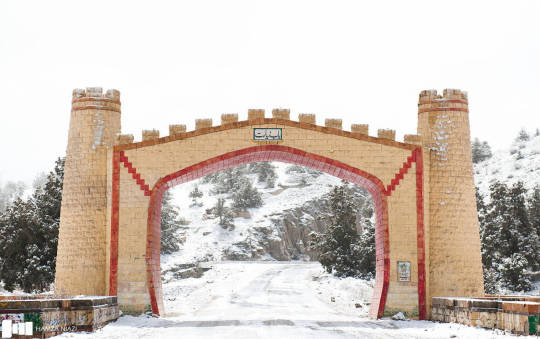
Ziarat City Entrance
Skardu Gilgit Baltistan
Wrapped in a pristine white blanket of snow, Skardu transforms into a winter wonderland that beckons both adventurers and nature enthusiasts. Nestled amidst the towering peaks of Karakoram and the Himalayas, this picturesque town experiences freezing winters like no other place in Pakistan. The unique geographical location of Skardu, with its high mountain ranges and deep valleys, makes it one of the coldest places in Pakistan.
Skardu valley, Gilgit Baltistan Tour
The freezing winters of Skardu bring forth an ethereal beauty that captivates the senses. As gusts of wind whip through the narrow valleys, they carry tiny ice crystals that shimmer in the sunlight like magical diamonds. The frozen rivers and lakes reflect the muted colors of the surrounding landscape, creating a surreal mirror-like effect. The magnificent peaks stand tall and majestic against clear blue skies, their tops glistening with pristine white snow. Experiencing the freezing winters of Skardu is not for the faint-hearted but is undoubtedly an adventure worth undertaking for those seeking serenity amid nature's icy grip.

Shangrila resort Skardu Valley
Hunza Valley Gilgit Baltistan
Nestled in the picturesque valleys of Northern Pakistan, the Hunza Valley is a winter wonderland that beckons travelers seeking an adventure amidst icy landscapes. Renowned as one of the coldest places in Pakistan, this hidden gem offers stunning views of snow-covered mountains and crystal-clear lakes. With its towering snow-capped peaks, frozen rivers and lakes, and pristine white meadows, this region transforms into a magical spectacle during winter. As you step into this frozen paradise, let yourself be captivated by the breathtaking beauty in every direction.
9 Days Hunza Valley, Pakistan Tour
The Hunza Valley is renowned for its stunning glaciers, showcasing nature's mesmerizing talent for sculpting ice. These colossal ice formations create a surreal atmosphere as they glitter under the sunlight and reflect hues of blue and turquoise. Please take a moment to stand in awe before these marvels of nature; feel the chill in the air as you witness the silent power of these ancient glaciers slowly shaping the land around them. This section on the icy landscapes of Hunza Valley delves into an enchanting realm where ice transforms ordinary scenery into extraordinary vistas.
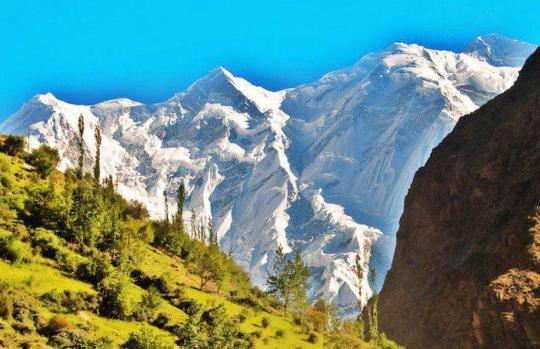
Rakaposhi peak (7788 M)Hunza Pakistan
Chitral Khyber Pakhtunkhwa
Chitral is nestled among the stunning Hindukush mountain range and is often hailed as one of the coldest places in Pakistan. This mesmerizing region boasts breathtaking landscapes covered in blankets of pristine snow during the winter months. Picture yourself surrounded by majestic peaks, snow-capped trees, and frozen rivers; it's like stepping into a real-life painting.
What sets Chitral apart from other cold destinations is its rich cultural heritage. The warmth and hospitality of the local people provide a stark contrast to the chilly temperatures. Embrace this opportunity to engage with the Kalash tribe, known for their unique traditions and vibrant festivals. Immerse yourself in their folklore, music, dance, and handmade crafts – truly an experience unlike any other.
So, pack your warmest clothes and get ready to explore one of the coldest places in Pakistan—Chitral, a haven where nature and culture harmonize amidst snow-clad landscapes that will undoubtedly leave you breathless.

Kalash People of Chitral Valley
Kalat Baluchistan
As winter descends upon the rugged region of Kalat, a unique and awe-inspiring spectacle unfolds. Nestled in the province of Balochistan, this town is considered one of the coldest places in Pakistan. The frigid winds blow relentlessly across its barren landscapes, transforming it into a winter wonderland. But what truly sets Kalat apart is not just its freezing temperatures, but the stoic resilience and adaptability of its people.
Top 10 beautiful places to visit in Islamabad
Kalat's residents have mastered the art of surviving in these extreme conditions. From wearing layers upon layers of clothing to lighting bonfires throughout their homes, they have developed ingenious ways to battle against Mother Nature's icy grip. Despite the hardships, there is a unique sense of camaraderie that emerges during these freezing months. Neighbors come together with warm cups of tea and comforting smiles, sharing stories and laughter as they navigate through this frosty ordeal.

Kalat Balochistan, Pakistan
Swat Khyber Pakhtunkhwa
Nestled in the mesmerizing mountains of Khyber Pakhtunkhwa, Swat Valley transforms into a true winter fairytale once the temperatures drop. As one of the coldest places in Pakistan, this picturesque region captivates visitors with its pristine snow-covered landscapes and breathtaking vistas. From glistening frozen waterfalls to charming wooden cottages dusted with snow, every corner of Swat Valley exudes a magical aura during the winter months.
But Swat Valley's winter charm is not just limited to outdoor excitement; it also has a cultural allure. The local people are known for their hospitality and warmth, welcoming visitors with open arms even during the coldest months. With traditional festivities, tourists get a chance to immerse themselves in the rich culture and traditions of this picturesque region. Exploring ancient Buddhist sites like Mingora's Saidu Stupa or taking a peaceful walk through dense forests covered in snow provide opportunities for both adventure seekers and history buffs alike.
4 Days Islamabad Swat Kalam Valley Tour
So, pack your warmest clothes and brace yourself for an unforgettable journey into Swat Valley - Pakistan's very own winter fairyland. Immerse yourself in breathtaking landscapes, embark on thrilling adventures, and witness cultural traditions that have stood strong amidst changing times. This hidden gem promises an experience that will leave you spellbound long after you say goodbye to its snowy wonderland.

Swat Valley KPK
Malam Jabba Khyber Pakhtunkhwa
Malam Jabba, nestled in the heart of the Swat Valley, is not only a popular ski resort but also one of the coldest places in Pakistan. Surrounded by awe-inspiring mountains and captivating landscapes, this frozen paradise offers a unique winter experience. What sets Malam Jabba apart from other cold destinations in Pakistan is its historical significance with ancient Buddhist stupas and monasteries that are spread across the resort. These remnants of archaeological sites provide glimpses into a rich past, and visitors to Malam Jabba can immerse themselves in natural beauty and cultural exploration.
Things to know about Pakistan before you visit this beautiful land
While many visit Malam Jabba for its world-class ski slopes, there's so much more to discover beyond the adrenaline rush on the snow-covered peaks. Nature enthusiasts will find solace in exploring nearby trails that lead to hidden valleys and pristine waterfalls, creating an unparalleled sense of tranquility amidst this frozen wonderland. Furthermore, local hospitality adds a charming touch to your experience as you warm up with steaming cups of kahwa (traditional tea) while savoring traditional delicacies at local cafes offering authentic Pakistani cuisine. So, if you're looking for an adventurous winter getaway that combines nature's splendor with cultural immersion, Malam Jabba should be at the top of your travel list.

Malam Jabba Swat Pakistan
Rawalakot Azad Kashmir
Located in the heart of Azad Kashmir, Rawalakot is a charming city that boasts unmatched natural beauty and tranquility. Often referred to as Paradise on Earth, this picturesque destination mesmerizes visitors with its snow-capped mountains, lush green valleys, and crystal-clear lakes. With an average elevation of 5,400 feet above sea level, it remains one of the coldest places in Pakistan throughout the year.
In addition to its outdoor activities, Rawalakot Azad Kashmir also boasts a rich cultural heritage that avid travelers can explore. The town is renowned for its traditional wooden architecture, which adds a unique charm to every corner. Visitors can delve into local history by visiting ancient temples and shrines, or immerse themselves in art and culture at various museums and galleries showcasing indigenous artwork. As the coldest city in Pakistan, Rawalakot Azad Kashmir promises an unforgettable winter retreat that combines nature's magnificence with cultural immersion.

Banjosa Lake Rawalakot Azad Kashmir
Quetta Baluchistan
Quetta considered the coldest city in Pakistan, is notorious for its bone-chilling temperatures. Nestled amidst the picturesque mountains of Baluchistan, it stands as a testament to the harsh winters that sweep across Pakistan. With average temperatures dropping below freezing point and sometimes even reaching -18 degrees Celsius, Quetta takes great pride in being one of the coldest places in Pakistan.
But there is more to Quetta's chilling temperature than meets the eye. While it may deter some from venturing outdoors, for others, it offers unique opportunities for thrilling adventure and exploration. The frozen lakes and rivers become playgrounds for ice skating enthusiasts looking to glide gracefully on their frozen surfaces.
Whether one seeks adventure or wishes to experience an intimate bond with nature and its people, Quetta's chilling temperature serves as both a challenge and an invitation—a chance to embrace the frozen beauty of this remarkable city while discovering new depths of resilience within ourselves.
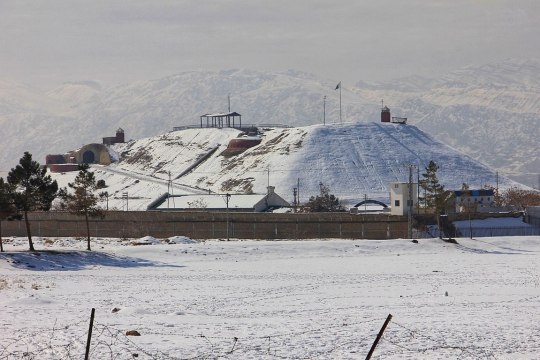
Quetta Fort Mirri
Muree Punjab
Nestled in the snow-capped peaks of the Pir Panjal Range, lies the enchanting hill station of Murree. Known for its captivating beauty and invigorating climate, this picturesque destination has earned its reputation as one of the coldest places in Pakistan. As winter blankets this picturesque retreat, it transforms into a wonderland that captivates all who venture there. Every turn offers breathtaking views of rolling hills blanketed in pristine white snow. The serenity that envelops Murree in winter is unlike any other, offering visitors a chance to pause and reconnect with nature.
3 Days Murree Tour Package
Beyond its scenic beauty, Murree also holds a rich history that adds another layer of appeal to its winter charm. Established during British colonial rule as a summer retreat for officials seeking respite from the scorching heat of the plains, it has retained much of its old-world charm and elegance. Colonial-era buildings dotting its streets provide glimpses into the past while adding an air of nostalgia to this serene winter escape.
While many flock to Murree for its tranquil atmosphere and stunning landscapes, it also offers many activities for thrill-seekers and adventure enthusiasts. From skiing down, powdery slopes to embarking on invigorating treks through snow-laden trails, there is no shortage of excitement for those craving outdoor adventures amidst the winter stillness.
The coldest places in Pakistan offer a unique and challenging winter experience like no other. Whether it be Skardu's freezing temperatures or Murree's heavy snowfall, each destination has its charm and attractions for adventurous individuals seeking a thrilling winter getaway. However, it is important to remember that visiting these areas requires proper preparation and caution due to the extreme conditions. So, if you're ready to embrace the cold and embark on an unforgettable journey, pack your warmest clothes and gear up for the adventure of a lifetime in the top 10 coldest places in Pakistan.

Muree Pakistan
Read the full article
#Chitral#Hunza#Kalat#MalamJabba#MureePunjab#QuettaBaluchistan#RawalakotAzadKashmir#Skardu#Swat#ZiaratBalochistan
0 notes
Text
Most beautiful cold places in Pakistan

Pakistan is known for its diverse landscapes, and it is home to several beautiful cold places that offer breathtaking scenery. The country is rich in natural beauty, and there are some most beautiful scenic places in Pakistan, each with its own unique charm. Here are some of the most beautiful cold places in Pakistan:
Hunza Valley:
Located in Gilgit-Baltistan, Hunza Valley is known for its stunning mountain views, including Rakaposhi, Ultar Peak, and Ladyfinger Peak. The valley is surrounded by snow-capped peaks, lush green meadows, and vibrant orchards.
Naltar Valley:
Situated in Gilgit-Baltistan, Naltar Valley is famous for its enchanting beauty and ski resorts. The valley is adorned with colorful wildflowers during the summer months, while in winter, it transforms into a snow-covered wonderland.
Skardu:
Nestled in the Karakoram Range, Skardu is a picturesque town surrounded by towering mountains, including K2, the second-highest peak in the world. The region offers breathtaking views of glaciers, lakes, and scenic valleys.
Murree:
Located in the Pir Panjal Range, Murree is a popular hill station near Islamabad. It is known for its cool climate, lush forests, and beautiful viewpoints offering panoramic vistas of the surrounding hills and valleys.
Swat Valley:
Swat Valley, often referred to as the "Switzerland of Pakistan," is located in Khyber Pakhtunkhwa province. It features stunning landscapes, including snow-capped peaks, alpine meadows, and crystal-clear lakes such as Mahodand Lake and Lake Saif-ul-Malook.
Kalash Valley:
Situated in the Chitral District of Khyber Pakhtunkhwa, Kalash Valley is renowned for its unique culture, ancient traditions, and beautiful landscapes. Surrounded by snow-capped mountains, the valley offers picturesque views and is home to the indigenous Kalash people.
Fairy Meadows:
Located in the Gilgit-Baltistan region, Fairy Meadows is a lush green meadow surrounded by towering peaks, including Nanga Parbat. It offers stunning views of the mountain and is a popular base camp for trekkers.
Pakistan is blessed with breathtaking landscapes, and it offers numerous scenic road trips that take you through majestic mountains, lush valleys, and picturesque villages. Here are some of the most beautiful road trips in Pakistan:
Karakoram Highway (KKH):
Known as the "Eighth Wonder of the World," the Karakoram Highway is one of the highest paved roads in the world. It stretches from Islamabad to the border of China, passing through Gilgit-Baltistan. The route offers stunning views of the Karakoram and Himalayan mountain ranges, glaciers, and the mighty Indus River.
Naran-Kaghan Valley:
This road trip takes you through the stunning Naran-Kaghan Valley in Khyber Pakhtunkhwa province. The journey from Abbottabad to Naran offers breathtaking views of snow-capped peaks, alpine meadows, crystal-clear lakes, and gushing waterfalls.
Shandur Pass:
Located at an elevation of 3,700 meters in Gilgit-Baltistan, the road trip to Shandur Pass is a thrilling adventure. The journey takes you through rugged mountain terrain and offers panoramic views of the Hindukush Range. Shandur Pass is also known for hosting the world's highest polo ground.
Swat Valley:
The road trip to Swat Valley from Islamabad or Peshawar is a scenic delight. As you drive through the Malakand Pass, you'll witness the breathtaking views of the Swat River, lush green valleys, terraced fields, and snow-capped peaks.
Coastal Highway:
Stretching along the Arabian Sea, the Coastal Highway is a mesmerizing road trip from Karachi to Gwadar. The route offers scenic coastal views, pristine beaches, rugged cliffs, and fishing villages.
Kalash Valley:
The road trip to Kalash Valley in Chitral is an enchanting journey. As you drive through the winding roads, you'll be treated to stunning views of the Hindu Kush mountains, gorges, and the picturesque villages of the indigenous Kalash people.
Deosai Plains:
The road trip to Deosai Plains in Gilgit-Baltistan is a unique experience. The route takes you through remote mountain roads and leads to the second-highest plateau in the world. Deosai is known for its vast grasslands, wildflowers, and the opportunity to spot rare wildlife like the Himalayan brown bear.
0 notes
Text

Stepping into the land of enchantment, I embarked on a transformative journey through the northern areas of Pakistan. With a heart brimming with anticipation and a mind ready to be captivated, I set foot in this magical region known for its breathtaking landscapes, towering peaks, and warm hospitality. Little did I know that the next few weeks would be a life-altering experience, immersing me in the beauty and culture of Pakistan's northern gems.
Hunza Valley: My adventure began in the fabled Hunza Valley, a place straight out of a fairytale. Surrounded by towering peaks, I found myself in awe of the majestic Rakaposhi and Ultar peaks that seemed to touch the sky. As I wandered through the terraced fields and apricot orchards, the warm smiles of the local people embraced me. Exploring the ancient Baltit Fort, I delved into the rich history and cultural heritage of the region.
Skardu: Journeying further, I arrived in Skardu, a gateway to heavenly landscapes. The turquoise waters of Satpara Lake reflected the surrounding snow-capped peaks, creating a postcard-perfect view. The thrilling ride to the world's highest cold desert, the Katpana Desert, left me speechless as I stood amidst the golden sands, marveling at nature's artistry. Skardu became my base for embarking on treks and adventures, each step leading me closer to discovering my inner strength.
Naltar Valley: In the tranquil embrace of Naltar Valley, I reveled in nature's kaleidoscope. The vibrant meadows painted a picture of serenity, while the snow-crowned peaks whispered tales of ancient glory. Skiing down the slopes during the winter season was an exhilarating experience, leaving an indelible mark on my soul.
Fairy Meadows: Nestled beneath the watchful gaze of Nanga Parbat, Fairy Meadows cast a spell on me. The emerald green meadows stretched endlessly, as if inviting me to leave the ordinary behind. Camping amidst the tranquility of nature, I witnessed the sun painting the mighty peak in shades of gold, a sight that etched its beauty into the depths of my being.
Khunjerab Pass: Crossing the highest paved international border, Khunjerab Pass took my breath away. The vastness of the Khunjerab National Park unfolded before me, with snow-capped peaks standing as guardians of the wild. Observing the rich biodiversity and catching a glimpse of the elusive Himalayan brown bear filled me with a profound sense of wonder and reverence for our natural world.
As my journey through the northern areas of Pakistan drew to a close, I carried a piece of this paradise within me. The splendor of Hunza Valley, the awe-inspiring landscapes of Skardu, the tranquility of Naltar Valley, the enchantment of Fairy Meadows, and the majestic beauty of Khunjerab Pass all left an indelible mark on my soul. Beyond the picturesque vistas, it was the warmth and kindness of the local people that made this journey truly unforgettable. I left with a renewed appreciation for nature's wonders and a deeper understanding of the diverse cultures that call this region home. The northern areas of Pakistan had opened my eyes, expanded my horizons, and gifted me memories that will forever reside in my heart.
#adventure#hunza valley#pakistan#explore#naran#kpk#torism#travel#Fairy Meadows#Khunjerab Pass#Naltar Valley#skardu
1 note
·
View note
Text
Kargil War
The Kargil War, otherwise called the Kargil struggle, was an outfitted clash between India and Pakistan that occurred between May and July 1999 in the Kargil area of Kashmir.
The reason for the conflict was the penetration of Pakistani fighters and Kashmiri aggressors into positions on the Indian side of the Line of Control, which fills in as the accepted boundary between the two countries. Pakistan accused the battling altogether of autonomous Kashmiri extremists; be that as it may, reports abandoned by setbacks and later articulations by Pakistan's Top state leader and Head of Armed force Staff showed inclusion of Pakistani paramilitary powers. The Indian Armed force, upheld by the flying corps, went after
the Pakistani positions and, with global discretionary help, at last constrained a Pakistani withdrawal across the Line of Control (LoC).
The war is one of the latest instances of high height fighting in precipitous landscape, and presented critical strategic issues for the battling sides. This was the main ground battle between the two nations after they had created atomic weapons. (India and Pakistan both test-exploded splitting gadgets in May 1998, however the primary Indian atomic test was conducted in 1974.) The contention prompted uplifted pressures between the two countries and expanded safeguard spending with respect to India. In Pakistan,
the consequence made unsteadiness the public authority and the economy, and on October 12, 1999 an overthrow by the military set armed force boss Pervez Musharraf in power. HOW KARGIL WAR EFFECT BOMBAY STOCK EXCHANGE.
location
Before the Parcel of India in 1947, Kargil was essential for Gilgit-Baltistan, a locale of numerous different semantic, ethnic and strict gatherings, due to a limited extent to the many confined valleys isolated by a portion of the world's most noteworthy mountains.
The Principal Kashmir War (1947-48) came about in a large portion of the Kargil district staying an Indian region; then, after Pakistan's loss in the Indo-Pakistani Conflict of 1971, the excess regions, including key garrisons, likewise passed into An indian area.
Kargil is the main region in the Ladakh development that has a Muslim majority. The town and locale of Kargil in is presently called Jammu and Kashmir.
The town lies on the Line of Control (LOC), the true boundary for the two countries, found 120 km (75 miles) from Srinagar, confronting the Northern Areas of Pakistan. Like different regions in the Himalayas, it has a mild environment.
Summers are cool with bone chilling evenings, while winters are long and cold with temperatures frequently decreasing to −40 °C (−40 °F). A public roadway interfacing Srinagar to Leh slices through Kargil. The region that saw the penetration and battling is a 160 km extended length on the line of the LOC, neglecting a crucial thruway on the Indian side of Kashmir. Aside from the region capital, Kargil,
the forefront in the contention enveloped the small town of Drass as well as the Batalik area, Mushko Valley and other close by regions along the true line. GO TO MY HOME PAGE The tactical stations on these edges were by and large around 5,000 meters (16,000 feet) high, with a couple as high as 5,600 meters (18,000 feet). One of the fundamental motivations behind why Kargil was explicitly focused on for invasions was its landscape fit a preplanned seizure.
With strategically imperative elements and good to go protective posts on the pinnacles, it gave an ideal key position to a protector likened to a stronghold. Any assault to remove the foe and recover key position in a mountain fighting would require a far higher proportion of aggressors to safeguards,
which is additionally exacerbated by the high elevation and frigid temperatures. Also, Kargil was only 173 km (108 mi) from the Pakistan town of Skardu, which was equipped for giving strategic and cannon backing to the Pakistani warriors.
This multitude of strategic reasons, in addition to the Kargil locale being a Muslim greater part, were most likely contributing variables to why Kargil was picked as the area to assault.
Background
After the Bangladesh Freedom Battle in 1971, there had been an extensive stretch of relative quiet among the two neighbors. However, during the 1990s, rising strains and struggle with separatists in Kashmir as well as atomic tests by the two nations in 1998 changed the situation. In spite of the pugnacious climate, the two nations marked the Lahore Statement in February 1999 to give a serene and respective answer for the Kashmir issue. Nonetheless, components in the Military of Pakistan secretly prepared and sent troops and paramilitary powers, some purportedly in the pretense of mujahideen, into the Indian domain.
The point was to cut off the connection among Kashmir and Ladakh, and make Indian powers pull out from the Siachen Glacier mass, subsequently driving India to arrange a settlement of the more extensive Kashmir question. Pakistan likewise accepted that any pressure in the district would internationalize the Kashmir issue, assisting it with getting a rapid goal. One more objective might have been to lift the feeling of confidence for the very long term resistance in Indian-held Kashmir by playing a proactive job.
A few scholars have guessed that the activity's goal may likewise have been as a reprisal for India's Activity Meghdoot in 1984 that held onto quite a bit of Siachen Ice sheet. As indicated by India's then armed force boss Ved Prakash Malik, and numerous different researchers, the invasion was code named "Activity Badr '', and a large part of the foundation arranging, including development of strategic stockpile courses, had been embraced significantly sooner.
Time and again, the military had given past Pakistani pioneers (in particular Zia ul Haq and Benazir Bhutto) comparable propositions for a penetration in the Kargil locale during the 1980s and 1990s. In any case, the plans had been racked because of a paranoid fear of bringing the countries into hard and fast conflict.
A few experts accept that the plan of assault was reactivated when Pervez Musharraf was delegated head of armed force staff in October 1998. In an exposure made by Nawaz Sharif, the then Top state leader of Pakistan, he expresses that he knew nothing about the readiness of the interruption, and it was a pressing call from Atal Bihari Vajpayee, his partner in India, that educated him about the circumstance.
Answering this, Musharaf attested that the Top state leader had been advised on the Kargil activity 15 days in advance of Vajpayee's excursion to Lahore on February 20. Sharif had credited the arrangement to Musharraf and "only a few of his comrades", a view shared by certain Pakistani journalists who have expressed that main four commanders, including Musharraf, knew about the arrangement.
0 notes
Text
How Winter in Pakistan 2023 Will Start?
How Winter in Pakistan 2023 Will Start?
Weather Today
In most of the country, cold, dry weather is forecast, unlike the beginning of winter in Pakistan in 2023. However, Punjab’s plain districts are likely to experience foggy conditions in the early morning hours. Most of the country saw cold, dry weather. Northeast Punjab was covered in fog. Leh -09, Skardu -08, Astore -05, Gupis -04, Baramulla, Hunza, Kalat -03, Pulwama, Kalam,…
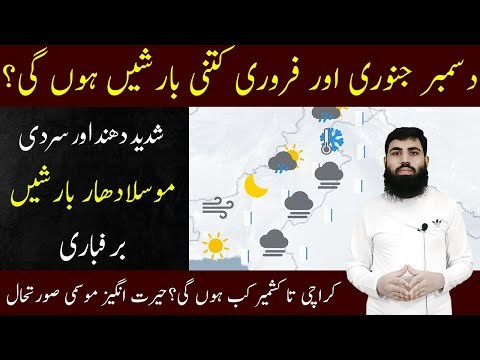
View On WordPress
0 notes
Text
youtube
#travel vlog#Ugly & Traveling#Ugly And Traveling#UglyAndTraveling#travel around the world#travel blogger#Cold Desert Skardu#skardu pakistan#cold desert pakistan#travel pakistan#skardu#skardu valley#cold desert skardu pakistan#skardu in winter#cold desert in win#skardu valley tune#gilgit baltistan#gilgit skardu road#skardu gilgit baltistan#skardu gilgit road#skardu gilgit baltistan tourism pak#pakistan travel vlog#Katpana#Katpana skardu#Katpana Desert#Youtube
0 notes
Photo
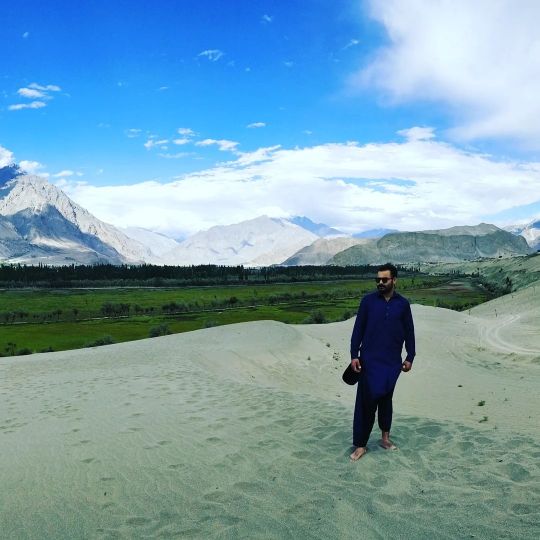
The Cold Desert, also known as the #Katpana #Desert or Biama Nakpo, is a high-altitude desert located near Skardu, Gilgit−Baltistan, Pakistan. The desert contains large sand dunes that are sometimes covered in snow during winter. (at Katpanah Skardu) https://www.instagram.com/p/ClWmkgLvptD/?igshid=NGJjMDIxMWI=
0 notes
Text

Serena Hotel, Shigar Fort, Shigar, Skardu, Pakistan.
By @thepakistaniguy
#pakistan#landscape#nature#photography#thepakistaniguy#hills#flowers#air#skardu#Serena#shigar#gilgit#Baltistan#beautiful#snow#winter#summer#alone#quote
11 notes
·
View notes
Photo

Winter from a distance, Skardu, Pakistan [OC][1350x1080] via /r/EarthPorn https://ift.tt/2OxXEJf
7 notes
·
View notes
Text


Same place, different seasons!
Skardu, Gilgit Baltistan, Pakistan.
#same place different seasons#same place#different seasons#skardu#pakistan#gilgit baltistan#snow#warm#cold#hot#nature#nature in winter and summer#winter#summer#winter and summer#instatravel#travel#travelling#places#explore#aesthetic#hill station#killer view#how muslims live#muslims#explore nature#explore muslims#explore pakistan#explore beauty#mountains
15 notes
·
View notes
Photo

Let's say good bye to winters, this year white blanket gave much more beauty to our beautiful region,May Allah keep peace in every corner of Pakistan 💖. #winter #skardu #snow #dawndotcom #beautifulpakistan #travelguide #trekking #outdoors #wanderlust #instatravel #wonderful_places #girlswhotravel #adventure #picturepakistan #pakistan #iphonephotography #photooftheday #travelblogger #traveling #travelholic #mountains #hiking #photography #nature #travelphotography #travelpakistan #explore #spring #tourism (at Skardu) https://www.instagram.com/p/Bute3rjpKBy/?utm_source=ig_tumblr_share&igshid=1e23por2yyh77
#winter#skardu#snow#dawndotcom#beautifulpakistan#travelguide#trekking#outdoors#wanderlust#instatravel#wonderful_places#girlswhotravel#adventure#picturepakistan#pakistan#iphonephotography#photooftheday#travelblogger#traveling#travelholic#mountains#hiking#photography#nature#travelphotography#travelpakistan#explore#spring#tourism
1 note
·
View note
